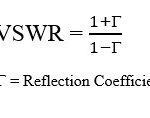Modulation Techniques in LTE
- LTE devices use several modulation techniques to modulate data and control information. These modulation techniques include: QPSK (2 bits per symbol), 16QAM (4 bits per symbol), and 64QAM (6 bits per symbol). All of these modulation techniques are supported in the downlink direction; and all but 64QAM, which is optional, are supported in the uplink direction.
- A modulation technique is selected based on the measured signal to interference plus noise ratio (SINR). Each modulation scheme has a threshold SINR. Subscribers located farther from the eNodeB (i.e. with lower SINR values) use a more robust modulation scheme (lower throughput), while subscribers closer to the eNodeB (i.e. with higher SINR values) can use less robust modulation schemes (higher throughput).
- Both the eNodeB and the UE measure signal quality using the Reference Signals. The Reference Signals carry a known (pseudo-noise) bit pattern at a boosted power level.
- The eNodeB always controls and selects the modulation and coding scheme for both
the downlink and uplink.
Modulation Techniques in LTE
Modulation techniques in LTE are used to convert digital data into radio signals for transmission over the air interface. These techniques are crucial for maximizing data rates, minimizing interference, and optimizing the use of available spectrum. LTE uses several advanced modulation schemes depending on the radio conditions and the type of data being transmitted. Here’s an overview of the modulation techniques used in LTE:
QPSK (Quadrature Phase Shift Keying): QPSK is the most basic modulation technique used in LTE. It transmits two bits per symbol, using four distinct phase shifts. QPSK is used in scenarios where the signal quality is poor or when lower data rates are required. It offers a good trade-off between bandwidth efficiency and robustness to noise and interference.
16-QAM (16-Quadrature Amplitude Modulation): 16-QAM transmits four bits per symbol by using 16 distinct signal points on the constellation diagram. This modulation scheme increases the data rate compared to QPSK, but it requires a better signal quality to function efficiently. 16-QAM is used in LTE when the radio conditions are better and higher throughput is needed.
64-QAM (64-Quadrature Amplitude Modulation): 64-QAM transmits six bits per symbol, using 64 distinct signal points. This is a higher-order modulation technique that offers even higher data rates than 16-QAM. However, it is more sensitive to interference and noise, meaning it is used in good radio conditions with strong signals. 64-QAM is typically employed in the downlink of LTE for users close to the eNodeB, where signal quality is optimal.
Modulation and Coding Scheme (MCS): The LTE network uses Modulation and Coding Schemes (MCS) to determine the appropriate combination of modulation and channel coding based on the radio conditions. MCS is adaptive and adjusts based on feedback from the user equipment (UE), such as the Channel Quality Indicator (CQI). This allows LTE to dynamically switch between modulation schemes like QPSK, 16-QAM, and 64-QAM for optimal performance under varying network conditions.
Benefits of Modulation Techniques:
- Higher Data Rates: Higher-order modulation techniques like 16-QAM and 64-QAM allow LTE to achieve greater data throughput, especially in favorable radio conditions.
- Efficient Spectrum Use: By adapting modulation schemes according to channel conditions, LTE maximizes the use of available bandwidth, improving overall network capacity.
- Adaptability: The use of adaptive modulation allows LTE to maintain efficient communication even when signal conditions change, such as when a user moves or when interference varies.
In summary, LTE uses a variety of modulation techniques, including QPSK, 16-QAM, and 64-QAM, to balance data rates and signal reliability. By adapting the modulation based on real-time conditions, LTE efficiently handles diverse user requirements, improving overall network performance.


